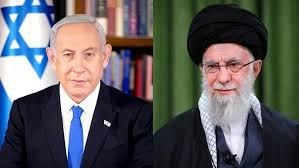
Nearly a week has passed since Israel launched a wave of airstrikes on Iran on June 13, beginning with early morning attacks and continuing into the afternoon with strikes on the city of Tabriz in northwest Iran, according to Al Jazeera. The operation reportedly targeted Iran’s nuclear and military infrastructure and resulted in the deaths of senior Iranian military officials and nuclear scientists. The scale and precision of the attack marked a significant escalation in the long-standing tensions between the two countries.
Danny Citrinowicz, an expert with the Atlantic Council’s Middle East Programs, offered insight into the timing and intent behind the Israeli operation. He noted that Israel acted at a moment when Iran’s strategic air defense had been compromised. According to him, the collapse of the Axis of Resistance—led by Hezbollah—combined with Israel’s operational achievements, created a power imbalance that Israel sought to exploit. He emphasized that Iran’s vulnerability to Israeli air power was a critical factor in the decision to launch the June 13 attack.

Citrinowicz further explained that Israel’s concern over Iran’s continued weapons development and military enrichment efforts had reached a tipping point. These activities, he said, were increasingly viewed by Israel as intolerable. While Israel’s objective was not the complete destruction of Iran’s nuclear program—given its limitations without U.S. support—it aimed to delay Iran’s progress by at least a year through targeted strikes on key facilities. However, he cautioned that the attack could provoke Iran to intensify its nuclear efforts, driven by anger and resentment.
Approximately 18 hours after the Israeli strikes, Iran launched a two-wave ballistic missile attack targeting Israel from its own territory. Various media reports indicated that the retaliation had no significant effect. Jason M. Brodsky, Policy Director at United Against Nuclear Iran (UANI), commented on Iran’s limited response capacity. He noted that Iran cannot match the surgical and lethal precision of Israel’s campaign. As a result, Brodsky suggested that Iran may consider targeting the energy interests of U.S. partners in the Arab world as an alternative means of imposing economic costs in response to Israeli actions.
The Atlantic Council reported that Iran’s partners and proxies in the Axis of Resistance—excluding the Houthis—issued only general statements condemning the Israeli strikes. These groups have not altered their behavior toward Israel, nor have they indicated any intention to intervene on Iran’s behalf. This lack of action, according to the same report, reflects the weakened state of these groups after years of conflict with Israel. The Houthis were identified as the only Axis partner to have launched attacks on Israel following the June 13 strikes.
In the days that followed, the conflict continued to escalate. As of the seventh day, both Israel and Iran had resumed trading strikes. According to CNN, the Israeli military claimed to have hit military targets in Tehran, while Iran stated it had fired ballistic missiles toward Israel. FRANCE 24 reported that Iran launched a barrage of “dozens” of missiles at a hospital in southern Israel, with impacts also reported in two towns near Tel Aviv. The Soroka Hospital in Beersheba, one of the country’s largest medical centers, was left in flames following the early morning attack. Hospital director Shlomi Kodesh said 40 people were injured, and several wards were completely demolished, with widespread damage to buildings, windows, and ceilings.

Iran, however, stated that the hospital was not the intended target. According to Iranian sources, the missiles were aimed at a nearby military and intelligence base. Israeli Prime Minister Benjamin Netanyahu responded by declaring that Tehran would pay a “heavy price” for the attack. Israel’s Magen David Adom rescue service reported that at least 47 people were wounded in the Iranian strikes, with an additional 18 injured while rushing to shelters, according to FRANCE 24.

In retaliation, the Israeli army said it struck an inactive nuclear reactor in Arak during overnight raids, along with a uranium enrichment facility in Natanz. A statement from the Israeli military said, “The nuclear reactor in the area of Arak in Iran was targeted, including the structure of the reactor’s core seal, which is a key component in plutonium production.” The statement added that the strike was intended “to prevent the reactor from being restored and used for nuclear weapons development.” The Israeli Air Force reportedly deployed around 40 jets in the overnight operation, hitting “dozens” of sites, according to FRANCE 24.
Meanwhile, CNN reported that U.S. President Donald Trump convened a Situation Room meeting on June 18 to discuss potential U.S. options. While the president stated that his patience with Tehran had run out, he did not clarify whether the United States would become directly involved in the conflict. In a national address, Iran’s Supreme Leader Ayatollah Ali Khamenei declared that Iran would not surrender and warned that any U.S. military intervention would result in “irreparable damage.”
Sources cited by CNN indicated that President Trump’s primary concern is avoiding a prolonged conflict. While he has acknowledged arguments—including from Israel—that only the U.S. can decisively halt Iran’s nuclear ambitions, he remains cautious about entering a foreign war. According to the same report, Trump is weighing his options carefully, balancing alliance commitments with his stated desire to avoid entanglement in overseas conflicts.
Al Jazeera also reported that Trump is still considering whether the United States should intervene militarily. At the same time, Iran’s Supreme Leader reiterated that any strike on Iranian territory by the U.S. would have “serious and irreparable consequences.”
The rhetoric escalated further when Israeli Defense Minister Israel Katz issued a direct threat to Iran’s Supreme Leader, saying he “cannot continue to exist.” Katz accused Khamenei of personally ordering the missile strike that damaged Soroka Hospital. “Such a man can no longer be allowed to exist,” Katz told FRANCE 24. In response, Iraq’s top Shiite cleric, Grand Ayatollah Ali Sistani, warned that any targeting of Iran’s supreme religious and political leadership would have “dire consequences on the region,” according to the same report.
President Trump, speaking on Tuesday, said the United States was aware of Khamenei’s location but would not act on that information “for now.” The statement added another layer of uncertainty to an already volatile situation.
As the conflict continues into its second week, the region remains on edge. With both sides trading strikes and regional actors issuing warnings, the potential for further escalation remains high. The coming days may determine whether the confrontation remains contained or expands into a broader regional crisis.
BY BETELHEM BEDLU
THE ETHIOPIAN HERALD SATURDAY 21 JUNE 2025




